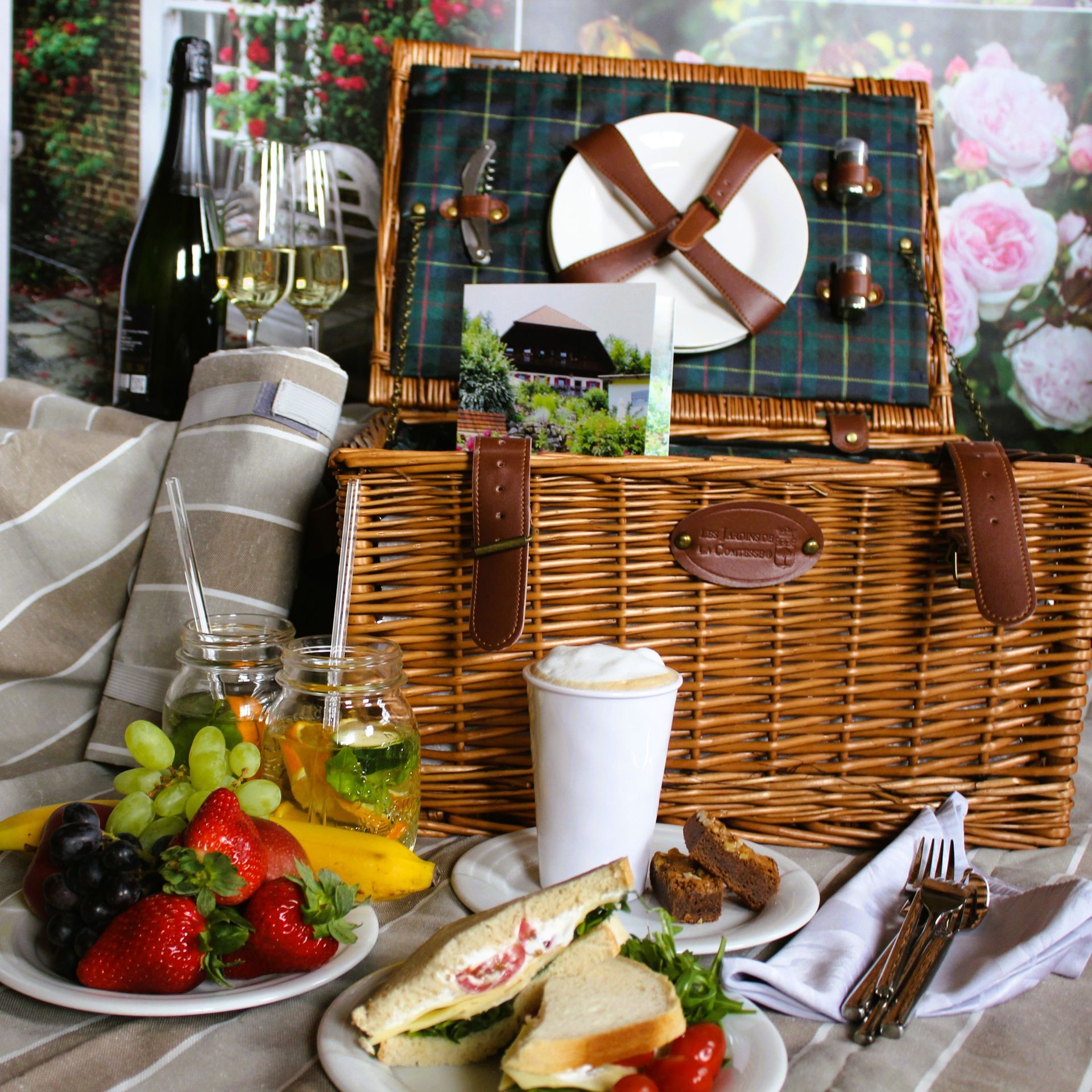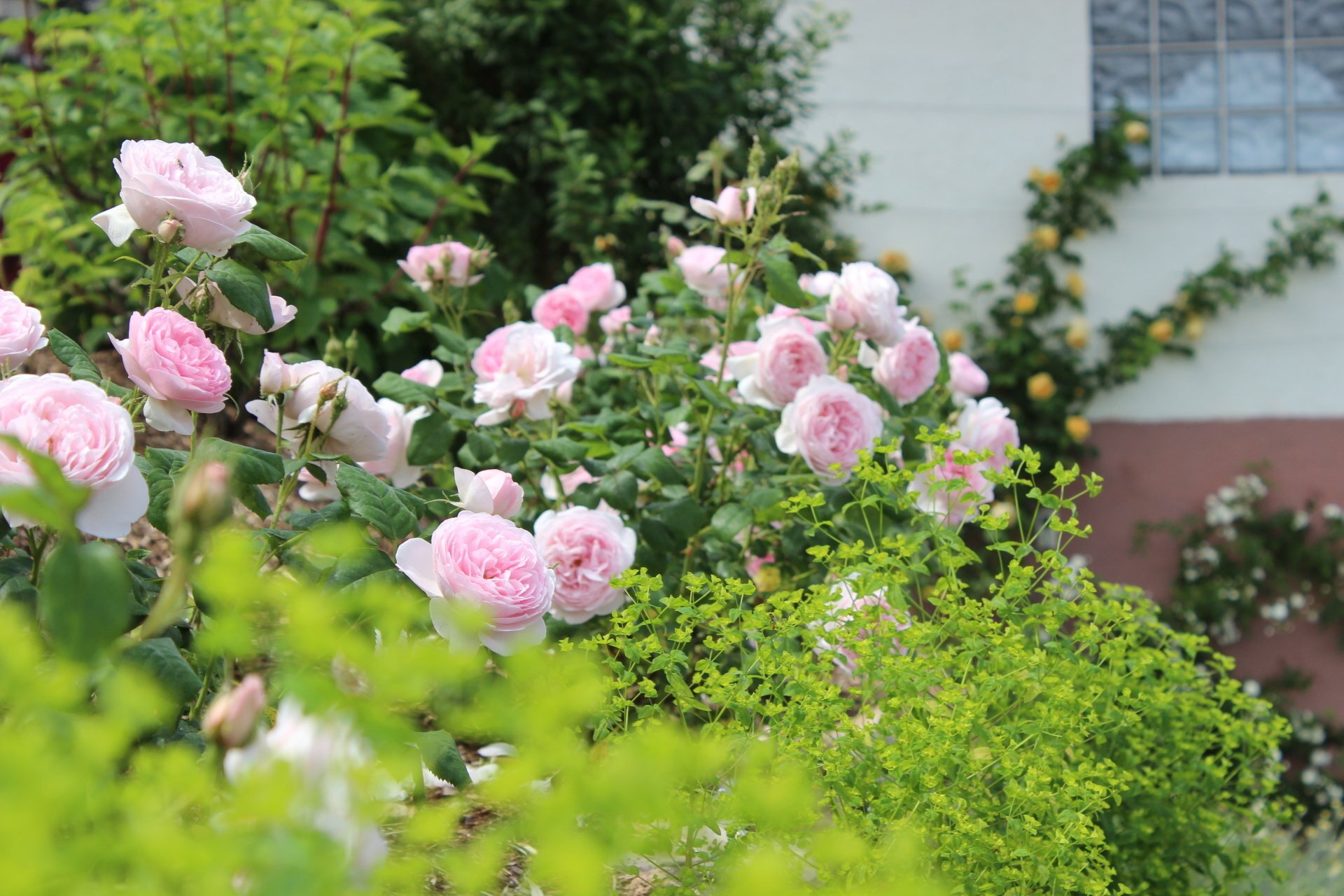DAVID AUSTIN - ENGLISH ROSES
English roses from David Austin – Fragrant beauties for your garden
SFor decades, the English roses bred by David Austin have been among the most popular and magnificent garden plants worldwide. Their lush, full blooms, unmistakable fragrance, and romantic appeal make them a true highlight in any rose garden.
Whether cup-shaped or rosette-shaped, English roses combine the charm of old roses with the flowering joy of modern varieties. They are not only exceptionally decorative but also robust, rain-resistant, and surprisingly easy to care for. Despite their elegant appearance, they are ideal for hobby gardeners who want to bring a touch of cottage garden romance to their own garden.
Tip: You don't need to be a rose specialist to successfully plant and care for an English rose!
English roses: Which variety is suitable for my garden?
With the worldwide success of David Austin roses, the variety of cultivars has also grown enormously – and with it, the agony of choice. Whether as a bedding rose, a solitary plant, or in a container: there is a suitable rose for every location and taste.
Our recommendations for the Central European climate:
'Olivia Rose Austin' – One of the most beautiful and robust varieties with delicate pink, strongly fragrant flowers.
'Gertrude Jekyll' – A popular classic with intense pink, nostalgic flowers and a strong fragrance.
'Graham Thomas' – A bright yellow beauty with vigorous growth and high recognition value.
Whether you are looking for a fragrant rose for the front garden, an impressive abundance of blossoms in the rose bed, or simply inspiration for your garden: English roses enrich every garden with style, fragrance, and character.
The ideal location for English roses
The right location for English roses – how to ensure they thrive
In order for a rose to develop its full beauty and resilience, it needs the right location – this also applies to the popular English roses from David Austin.
✅ Sun, air & humidity – the site requirements
English roses prefer a sunny, well-ventilated location where their leaves can dry quickly after rain. This effectively prevents fungal diseases such as powdery mildew and black spot. At the same time, the soil should not be too dry, as spider mites are more common under drought stress.
Even particularly robust varieties with the ADR seal (Allgemeine Deutsche Rosenneuheitenprüfung - General German Rose Novelty Testing) require good site conditions – otherwise even these resistant rose varieties will fall short of their potential.
Growth habit and planting distance – room for rose enjoyment
English roses can grow to over a meter in height and width, depending on the variety. Therefore, it's important to give them enough space from the start. A planting distance of approximately 50 cm to other perennials has proven effective.
Tip for designing your flower beds:
Choose companion plants that have similar requirements for sun, soil, and care. Sage is an ideal partner for roses – it loves sunny spots, promotes the health of the rose with its essential oils, and also adds color and texture to the flower bed.
Vigorous varieties are also suitable as climbing roses.
Some English rose varieties, such as 'The Lark Ascending', are characterized by particularly vigorous growth and, with some support, can even be cultivated as climbing roses on trellises or climbing frames.
Care tips
Pruning English roses
Properly pruning roses – this is how they bloom more beautifully and stay healthy.
A targeted rose pruning is crucial for healthy growth, abundant bloom and a long service life Your roses. Whether in spring, summer or with old bushes – with the right pruning you promote vitality, abundant flowering and a harmonious growth form.
Spring pruning – the most important pruning in the rose year
The Spring pruning This occurs as soon as the Forsythia are in bloom – this is the most reliable sign that no more severe frosts are expected. Now:
- Bed roses Cut back to 3–5 strong shoots and 3–5 buds per shoot.
- Shrub roses lightly thinned and cut back to about 40–60 cm
- Climbing roses only slightly pruned; old, rotten wood can be removed.
- English Roses lightly to moderately pruned, depending on the variety and location
- Remove very old, dead, or overly densely growing shoots close to the ground.
- Leave younger, vital shoots as the new basic structure.
- For heavily woody shrubs, cut back a maximum of 1/3 of the plant.
- Use sharp, clean rose shears, to create smooth cut surfaces
- Cut always above an outward-facing eye
- Remove diseased or dead wood completely
- Choose the right timeSpring for structure, summer for flowering, late winter for rejuvenation
- Don't be afraid of the cut – Roses tolerate pruning well and regenerate quickly.
Important: Always diagonally above an outward-facing eye Cut – this way the rose grows nice and airy and outwards.
Summer pruning – for a second bloom
At the Summer cut are regularly Remove faded flowers and weak shootsThis saves energy and stimulates many varieties to produce more fruit. second bloom in late summer on. Also Suckers They should be removed from the rootstock immediately – they rob the prized variety of nutrients and space.
Rejuvenation pruning – bringing older roses back into shape
Old, overgrown rose bushes benefit from stronger pruning. Rejuvenation pruning in late winter or early springThis involves:
The result: New shoots, better ventilation and increased flowering power.
Pruning roses – the most important tips at a glance:
Conclusion:
Regular, well-executed pruning strengthens your roses, promotes healthy new growth, and ensures a lush, long-lasting bloom – Year after year.
Rose care – The best tips for healthy, floriferous roses
Anyone who wants to enjoy strong, floriferous and healthy roses in the long term should, in addition to pruning, also do a few other things. Care tips for roses Pay attention. Because with the right care, roses become true gems in the garden – from the first bud until late autumn.
1. How to water roses correctly
Roses need plenty of water, especially during hot and dry summer periods. Pay attention to the following points:
- Water deeply and thoroughly, instead of just superficially
- Ideally in the morning or evening, Do not water over the leaves. – this prevents fungal diseases
- Particularly Water new or freshly planted roses regularly.
2. Mulching – Protection for soil and plant
Mulching the rose bed protects the soil from drying out, retains moisture, and suppresses weeds. The following are recommended:
- bark humus, composted horse manure or Rose soil with straw
- In spring, approximately. 3–5 cm mulch layer Apply around the plant – but not directly on the trunk
- First fertilization in spring (March/April), as soon as the shoots grow
- Second fertilization after the first flowering (June/July) – e.g. with organic rose fertilizer
- Do not fertilize after that, in order to... Maturation before winter to support
- mildew, black spot or Rose rust – remove affected leaves early
- Aphids Treat with nettle tea or organic sprays
- Choose resistant varieties (e.g. ADR roses) and ensure good air circulation.
- Lightly mound soil around roses in the flower bed (approx. 10 cm with soil or compost)
- For standard roses: Protect the crown with jute or fleece.
- Lightly wrap or cover climbing roses on walls
3. Fertilize roses – for strong blooms and healthy growth
Roses are among the heavy feeders and require nutrients regularly:
4. Recognizing and preventing diseases and pests on roses
A healthy location is the best protection, but still check regularly for:
5. Regularly remove faded blooms
Through the Removing faded flower heads The rose doesn't invest energy in seed production, but instead forms new buds. This is how you promote... Second or continuous flowering many varieties.
6. Winter protection for roses
Especially in the first year or with sensitive varieties:
Conclusion:
With these simple but effective tips for Rose care Your roses will remain healthy, bloom profusely and be resilient – rewarding you with a lush display of flowers from spring to autumn.













